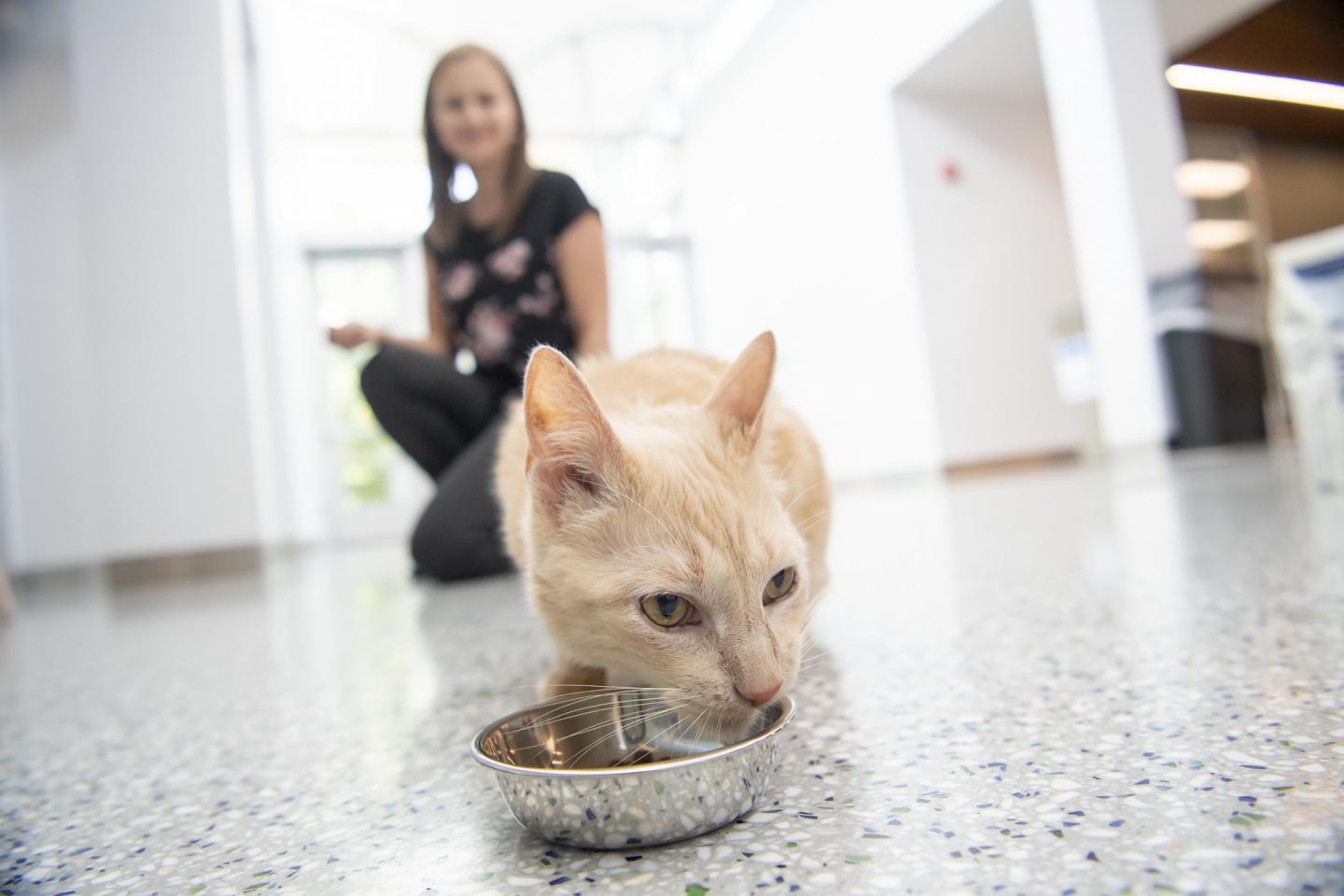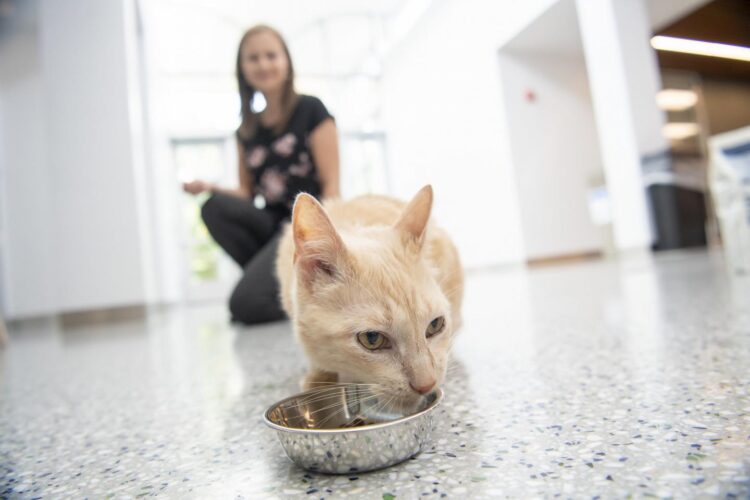
Credit: University of Illinois
URBANA, Ill. – If you haven’t been the parent or caregiver of an infant in recent years, you’d be forgiven for missing the human milk oligosaccharide trend in infant formulas. These complex carbohydrate supplements mimic human breast milk and act like prebiotics, boosting beneficial microbes in babies’ guts.
Milk oligosaccharides aren’t just for humans, though; all mammals make them. And new University of Illinois research suggests milk oligosaccharides may be beneficial for cats and dogs when added to pet diets.
But before testing the compounds, scientists had to find them.
“When we first looked into this, there had only been one study on milk oligosaccharides in dogs, and none in domestic cats. The closest were really small studies on a single lion and a single clouded leopard,” says Kelly Swanson, the Kraft Heinz Company Endowed Professor in Human Nutrition in the Department of Animal Sciences and the Division of Nutritional Sciences at Illinois.
“Our study was the first robust characterization of dog and cat milk oligosaccharides,” he adds. “Our data not only provide a better understanding of how milk meets the nutritional needs of newborn kittens and puppies, but also how it helps promote gut immunity and establish a healthy gut microbial community early in life.” That research appears in the journal PLoS ONE.
The foundational study identified three predominant oligosaccharide structures in canine milk: 3’sialyllactose, 6′-sialyllactose, and 2’fucosyllactose, the same compound showing up in many infant formulas today. Together, these three structures made up more than 90% of the total oligosaccharides in canine milk.
Feline milk was much more complex and balanced, with approximately 15 structures making up 90% of total oligosaccharides. Of these, difucosyllactose-N-hexaose b, 3′-sialyllactose, and lacto-N-neohexaose represented more than 10% each.
“Even though domestic dogs and cats both evolved as carnivores, they are metabolically distinct in many ways. Although pet cats still exist as true carnivores, pet dogs are omnivorous in nature,” Swanson says. “These new milk oligosaccharide data highlight another interesting difference between the species, justifying further research to reveal their role in the nutritional and health status of newborn puppies and kittens.”
Even before Swanson and his colleagues identified the oligosaccharides in cat and dog milk, the pet food industry was beginning to recognize the potential benefits of these compounds as supplements in pet foods. In 2019, Swiss biotech company Gnubiotics Sciences announced an animal milk oligosaccharide-like product known as GNU100, but it hadn’t been tested in animals. Swanson’s team took that on.
In two separate studies, both published in the Journal of Animal Science, Swanson and his colleagues determined the safety, palatability, and digestibility of GNU100 in dogs and cats.
First, in vitro laboratory tests with cellular colonies showed no toxic effects or tendencies to cause cell mutation. There was no reason to expect toxicity, but the result satisfies one of the basic FDA requirements for inclusion of any new ingredient in pet foods.
Next, the researchers mixed GNU100 at 1% with a fat source and coated commercial dry diets for cats or dogs. As a control, fat-coated diets without GNU100 were also offered. When animals got to choose between the control and 1% bowls, they went crazy for the GNU100.
“In the cats, it was a huge preference. They ate nearly 18 times more food with GNU100 than the control food. We had just been hoping they wouldn’t reject it. You know, cats can be pretty finicky,” Swanson says. “When we got the data back it was like, wow, they really love that stuff! And the dogs did, too.”
Swanson explains GNU100 is composed of a complex mixture of oligosaccharides and peptides, small protein-containing compounds that may make the food more appetizing to cats and dogs.
Finally, the researchers included GNU100 in experimental diets at 0%, 0.5%, 1%, and 1.5% and fed them to healthy adult dogs and cats for six months. During that time, they measured stool quality, blood metabolites, and nutrient digestibility, and evaluated changes in gut metabolites and the gut microbial community.
Overall, cats and dogs did well with GNU100, with no adverse health effects. And the researchers saw shifts in the gut microbiome toward more beneficial species and their metabolite profiles.
Aside from the palatability test, changes associated with GNU100 were as expected, showing intriguing trends in gut microbiota and gut metabolites that Gnubiotics plans to explore in future studies. Swanson thinks they would have seen bigger benefits in a more targeted study focusing on newborn cats and dogs, geriatrics, or pets with compromised immune systems.
“Theoretically, these products should stabilize and feed good bacteria in the gut as well as limit the growth of potentially undesirable bacteria. So if an animal is undergoing treatment for something with antibiotics or is in a high stress situation, having that product in the diet might keep the gut from destabilizing,” Swanson says. “Another target group for these products might be young animals as a way to maintain beneficial bacteria in the gut as they wean off their mothers. We’d need to do more testing to see if the product holds up in those target groups, but at least we know now that it is safe and well tolerated.”
###
The three articles referenced here can be found online at:
https:/
https:/
https:/
The Department of Animal Sciences is in the College of Agricultural, Consumer and Environmental Sciences at the University of Illinois.
Media Contact
Lauren Quinn
[email protected]
Original Source
https:/
Related Journal Article
http://dx.





